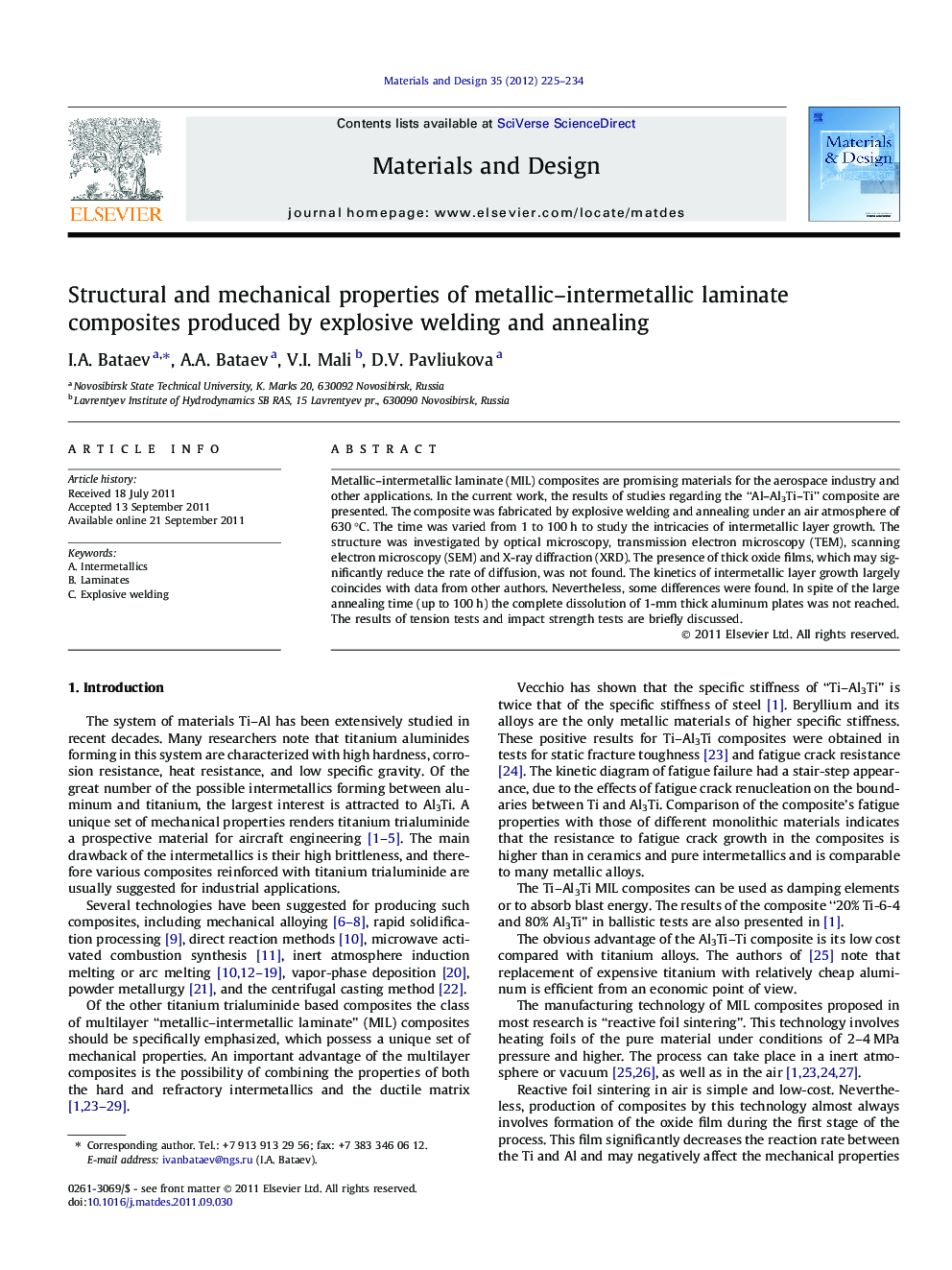| Article ID | Journal | Published Year | Pages | File Type |
|---|---|---|---|---|
| 830933 | Materials & Design (1980-2015) | 2012 | 10 Pages |
Metallic–intermetallic laminate (MIL) composites are promising materials for the aerospace industry and other applications. In the current work, the results of studies regarding the “Al–Al3Ti–Ti” composite are presented. The composite was fabricated by explosive welding and annealing under an air atmosphere of 630 °C. The time was varied from 1 to 100 h to study the intricacies of intermetallic layer growth. The structure was investigated by optical microscopy, transmission electron microscopy (TEM), scanning electron microscopy (SEM) and X-ray diffraction (XRD). The presence of thick oxide films, which may significantly reduce the rate of diffusion, was not found. The kinetics of intermetallic layer growth largely coincides with data from other authors. Nevertheless, some differences were found. In spite of the large annealing time (up to 100 h) the complete dissolution of 1-mm thick aluminum plates was not reached. The results of tension tests and impact strength tests are briefly discussed.
► Explosive welding and annealing were used to produce metallic–intermetallic composite. ► Intermetallic starts to grow on highly deformed welded seams. ► Complete dissolution of aluminum plate was not reached. ► Higher annealing temperature and smaller plates thicknesses decrease processing time.
